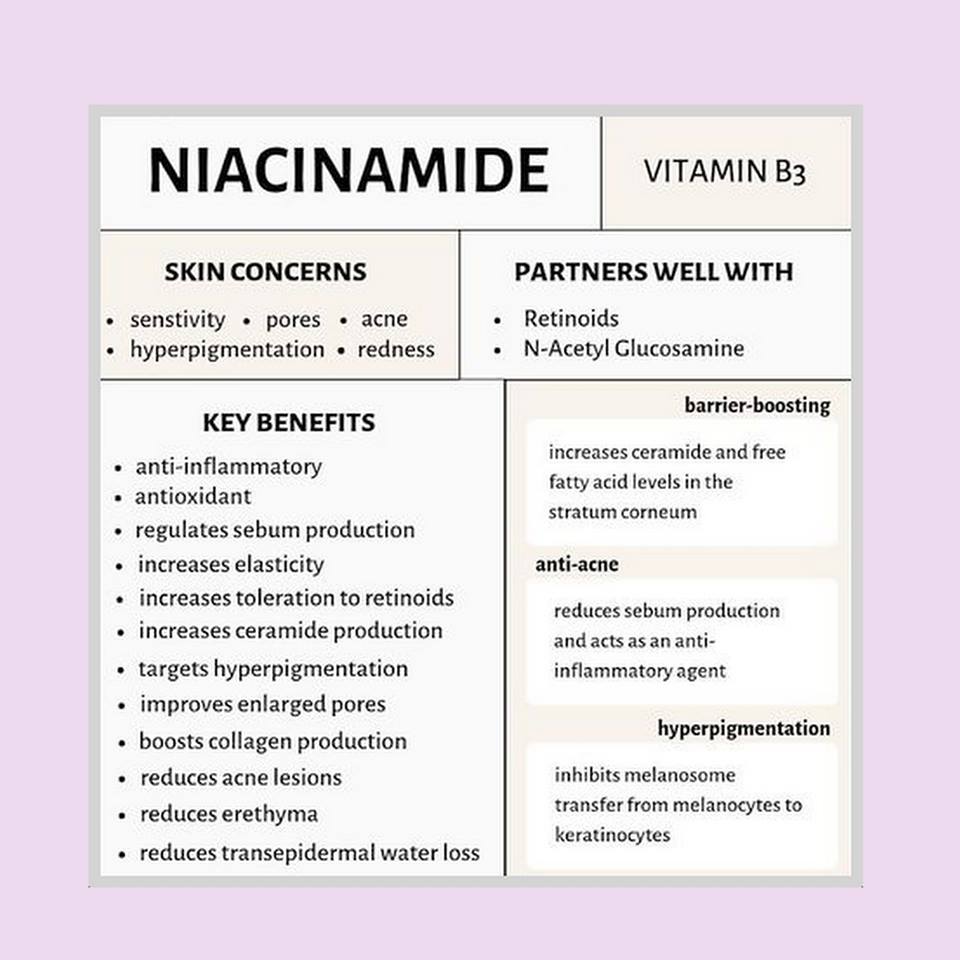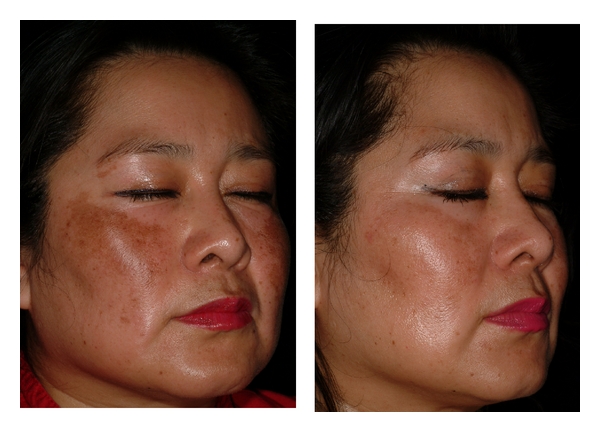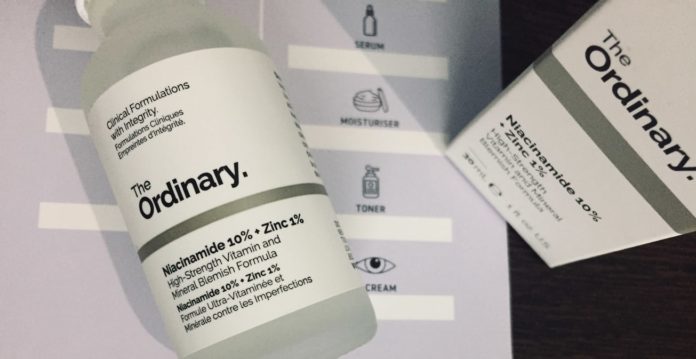You’ve heard of hyaluronic acid, vitamin A (aka retinol) and vitamin C (aka L-ascorbic acid), but niacinamide is another major player that deserves its own time in the skinccare spotlight as it is the most well studied form of topical B3 and is generally regarded as the most efficacious.
What is Niacinamide?
Niacinamide is a version of water-soluble vitamin B3 with antioxidant and anti-inflammatory properties. Just like the benefits of vitamin B3 in a diet, the benefits of topical niacinamide are extensive and varied. If you’re a fan of featherweight textures, you’re in luck – it doesn’t dissolve in oil so you’re more likely to find it in water-based skincare products.
Unlike AHAs/BHAs, vitamin C and vitamin A, it’s non-irritating and non-acidic. It is gentle and typically well-tolerated even on sensitive skin. Niacinamide’s long list of benefits make it a good pick for plenty of different skin types and concerns.
Many skin care products now contain niacinamide to deliver its benefits directly to the skin. When choosing a skin care product for its niacinamide content, people should not mistake it for products containing niacin, which is a completely different form of the chemical.
Benefits of Niacinamide for Skin

1. Moisture Boost
Niacinamide can help lower your skin’s sebum levels while also helping your skin make more ceramides. Topical application of niacinamide has been shown to boost the hydrating ability of moisturizers so skin’s surface can better resist the moisture loss that leads to recurrent dry, flaky skin.
2. Reduces Fine Lines and Wrinkles
A 2005 clinical study notes that topical application of niacinamide may help to improve skin appearance and reduce fine lines and wrinkles. One of the unique benefits of niacinamide as an anti-aging ingredient is that it enhances barrier function.
Barrier compromise is common in aging skin and can contribute to heightened sensitivity. Studies have demonstrated that topical application of niacinamide reduces skin sensitivity to irritating surfactants such as sodium laurel sulfate (SLS) and can also be used to improve the tolerability of ingredients such as retinoids.
3. Treats Acne
What about if you’re acne-prone? Yep, niacinamide is good for that, too. Its anti-inflammatory properties make it an effective treatment for skin conditions marked by inflammation like acne and rosacea.
A study published in 2013 in the International Journal of Dermatology found that a topical preparation of 4 percent niacinamide treated moderate acne as effectively as 1 percent clindamycin (topical antibiotic) when applied twice daily for 8 weeks.
4. Treats Hyperpigmentation

Have unwanted spots? Niacinamide inhibits the transfer of pigment to cells, improving discoloration.
A study published in 2011 found that 4 percent niacinamide is comparable to 4 percent hydroquinone (a skin-lightening agent), and within 8 weeks niacinamide showed improvement of solar elastosis in melasma skin.
If you’re struggling to find an active product that won’t cause purging or breakouts, niacinamide is a great choice. Any skin type and age can benefit from using this star ingredient in their skincare routine.
How to use Niacinamide
The key to reaping vitamin B3s benefits comes down to choosing your product selection wisely. Most major studies used topical preparations containing 2-10 percent pure niacinamide, so look for a product in that range if you can.
Please Note:
» If topical vitamin C or Vitamin A (retinol) is also a part of your skincare, then niacinamide should be applied at alternate times. Ideally vitamin C or retinol in the PM and niacinamide in the AM. If you want to use them together in your skincare routine, make sure you incorporate them into your evening routine and wait for at least 10 minutes between each serum.
» Niacinamide works brilliantly with common moisturizing ingredients, hence it can be safely used with gylcerin, non-fragrant plant oils, and hyaluronic acid.
» If you’re using any AHAs/BHAs in your skin-care regimen, use them at a different time of day or wait for at least 30 minutes in between application.
Here are a few popular skincare products that feature niacinamide as a key ingredient.
• The Ordinary Niacinamide 10% + Zinc 1% (Buy It, $6, beautybay.com)
• Skinceuticals Metacell Renewal Vitamin B3 (Buy It, $112, dermstore.com)
• Super Pure niacinamide 5% + zinc serum (Buy It, $35, glossier.com)
• Paula’s Choice 10% Niacinamide Booster (Buy It, $61.48, paulaschoice.com)
• SkinMedica Lytera 2.0 Pigment Correcting Serum (Buy It, $154, dermstore.com)
You may also like
For more on fashion & beauty, follow Major Mag on Instagram and Pinterest.
